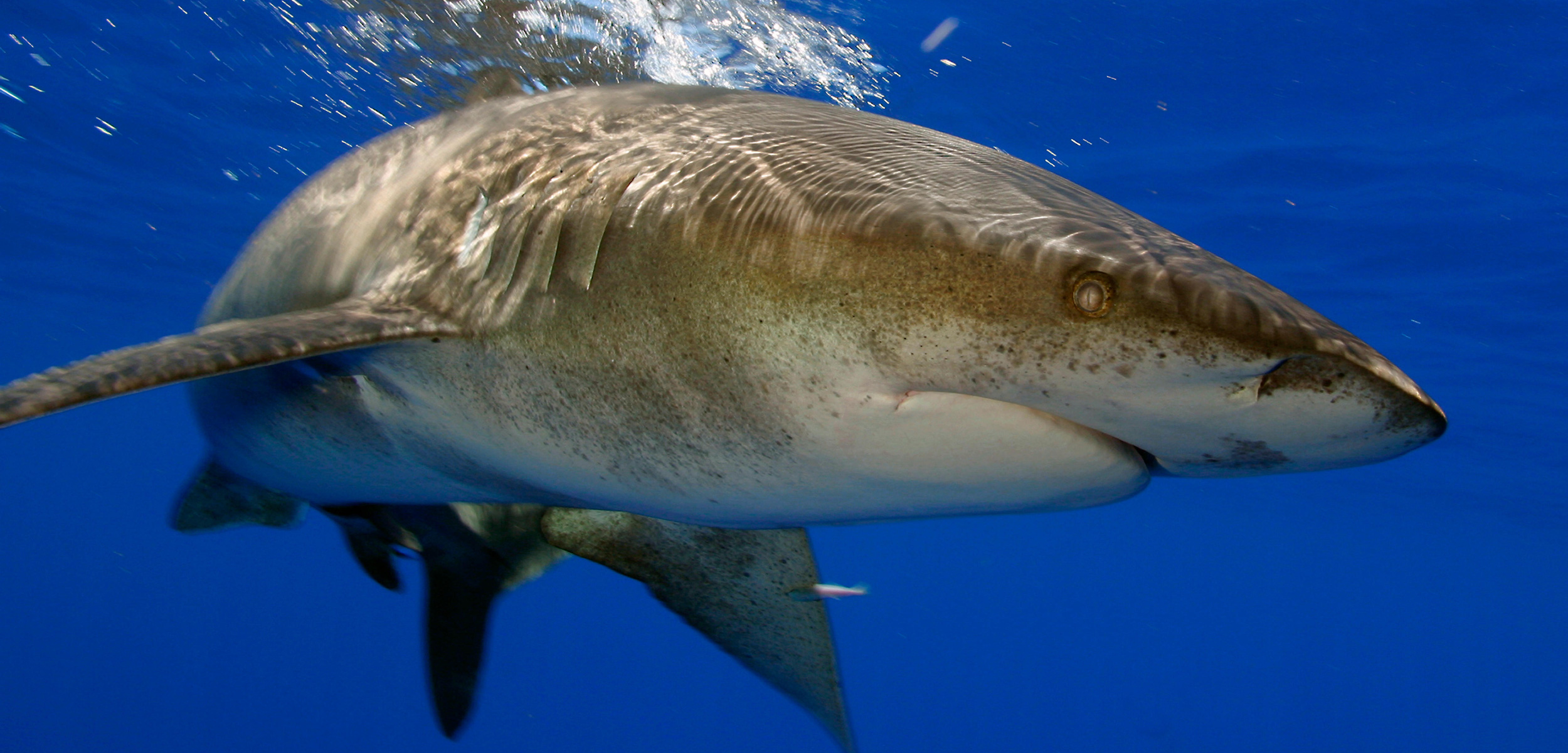Have Scientists Been Overestimating our Toll on Reef Sharks?
New research suggests we’ve hurt reef shark populations much less than previously assumed.
Article body copy
To restore shark populations to their natural abundance—levels held prior to overfishing by humans—the first step is to answer a question: how many sharks should there be? Researchers thought they had answered that question for coral reef sharks about a decade ago, and since then many shark advocates have been using the data to focus their conservation efforts. The only problem: it turns out the population target they’ve been using was wrong.
Sharks are under intense pressure from overfishing and ecosystem degradation, and many species are threatened with extinction. But as University of California, Santa Barbara, ecologist Darcy Bradley shows in a new study that calculated the shark population at Hawai‘i’s Palmyra Atoll, previous estimates of how many sharks should be living in the reef ecosystem were grossly inflated. With her newly revised estimate of what constitutes a healthy shark population, conservationists’ goals should now be much easier to reach.
Researchers turn to the Palmyra Atoll because, as a coral reef system that’s largely free from human interference, the location offers as close as can be found to a truly natural environment. Hence, the density of sharks swimming there represents what would have been found elsewhere before humans took their toll.
Through her study, Bradley found that there are approximately 20 reef sharks per square kilometer in the Palmyra Atoll.
Bradley and her team believe their new number trumps a different value published in an influential study a decade ago. That study calculated extremely high shark populations at the Palmyra Atoll—more than 100 times higher than Bradley’s tally—even though there wasn’t enough prey to support all the sharks they counted.
“The idea that a reef could support more predators than prey represented such a fundamental shift in the way marine scientists thought about healthy coral reef ecosystems that it actually flipped the conventional view of a food web, resulting in what’s known as an inverted trophic biomass pyramid,” Bradley says. “Imagine if the Serengeti was predator dominated the way that Palmyra’s reef was suggested to be and massive prides of lions larger than the herds of wildebeest they hunted roamed the plains.”
The inverted trophic biomass pyramid model for coral reefs has been debated in the marine science community since its publication, which made Bradley want to reinvestigate. She and her team tagged and tracked sharks for eight years before publishing their conclusions.
The result, Bradley says, “effectively shatter[s] the idea of the inverted trophic biomass pyramid in healthy coral reefs.”
The inverted trophic biomass pyramid model was always a controversial idea, but many findings in ecology are counterintuitive, and in the intervening years researchers proposed a variety of mechanisms to make sense of the unexpected situation. Besides, in science, hypotheses flow from the data. It’s just that, in this case, it now appears that the data was wrong.
The overestimates of the earlier study were a failure of methodology: divers counted sharks by sight, which led to them repeatedly counting some animals. Bradley’s team instead used cutting-edge electronic telemetry tags, resulting in a more accurate population estimate.
There’s no doubt that many shark populations are in trouble. But Bradley’s results show that achieving conservation goals may be more attainable than previously thought.
This finding is a mixed bag for shark advocates.
“We now know that a healthy reef simply can’t support the inverted trophic pyramid vision of shark density,” Bradley says. “Damaged reefs may not have as far to go to recover shark populations back to a healthy, near-natural state.”
On the other hand, she says, “If a healthy shark population is smaller than we thought, then it is also more precarious and more prone to overexploitation.”

